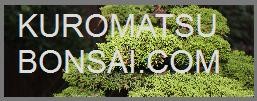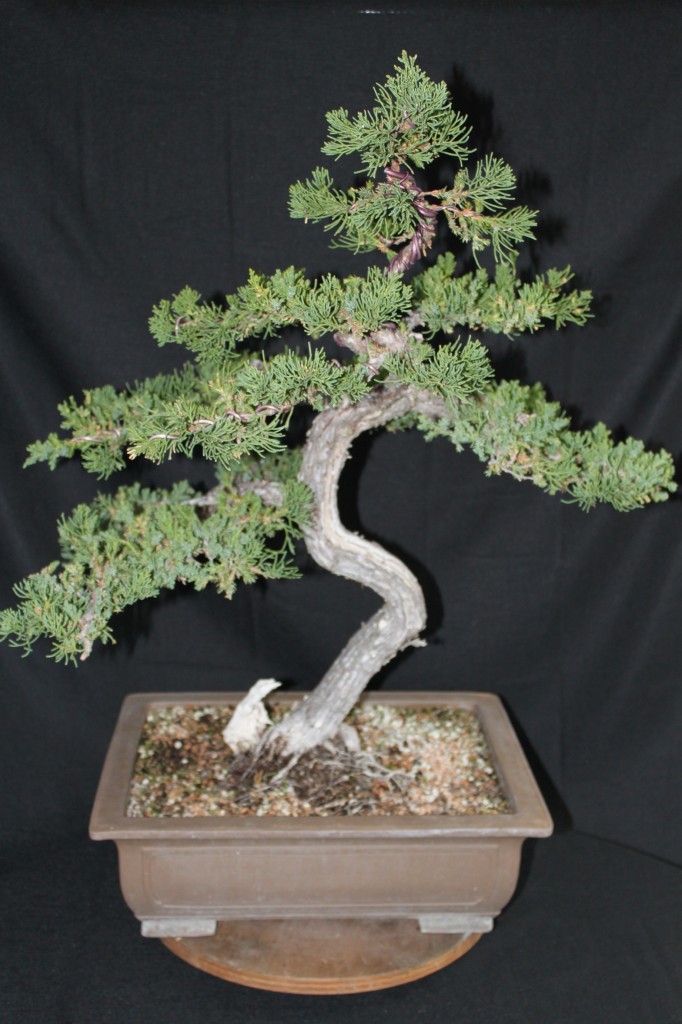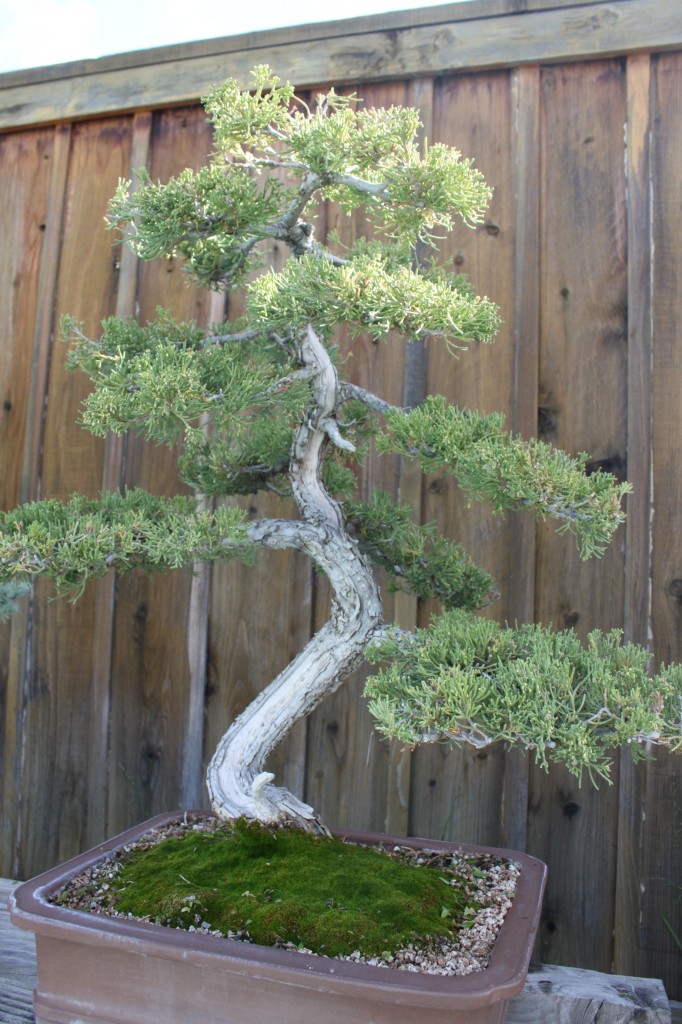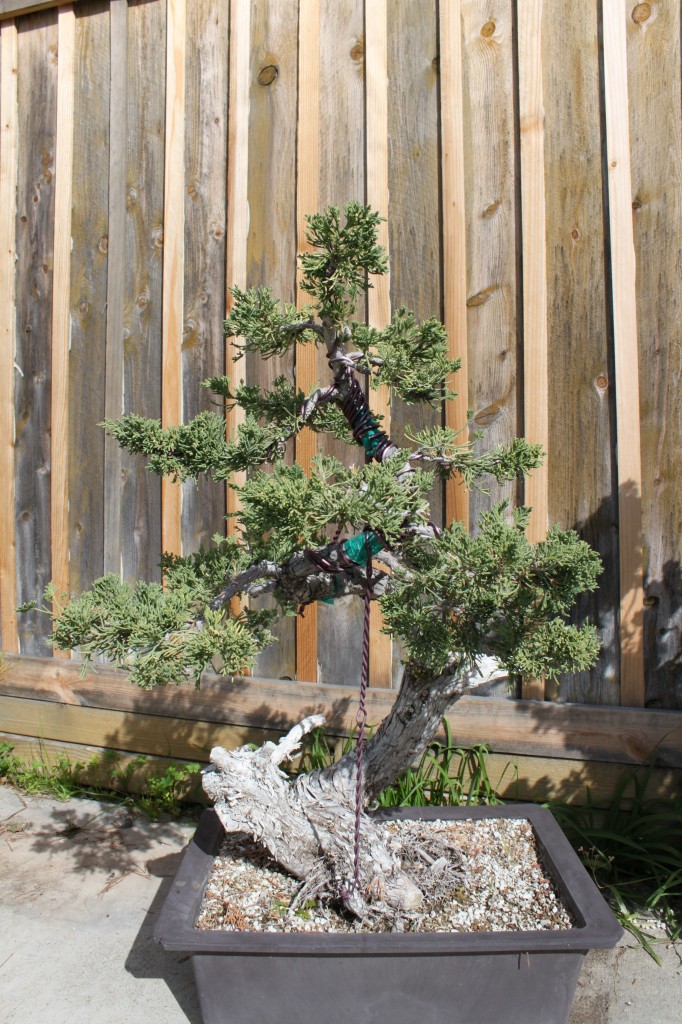Prostrata Juniper Bonsai and San Jose Juniper Bonsai
Prostrata Juniper Bonsai/San Jose Juniper Bonsai
Many species of Juniper are used for Juniper bonsai, but for larger bonsai with thick trunks, two closely related species work best: The Prostrata Juniper and the San Jose Juniper. Both are actually cultivars of Chinese Juniper; they are typically referred to as Juniperus Chinensis Prostrata and Juniperus Chinensis “San Jose.” These variants of the Chinese Juniper are native to far western China and Central Asia and are thought to be natural crossbreeds with Juniperus Squamata.
They are grown in nurseries in the United States as ornamental landscape plants. In the wild they grow as a large shrub or a small tree; the maximum height one might reach in optimal growing conditions is about thirty feet. While both varieties will set seed, the standard method of propagation is by cuttings. Bonsai enthusiasts will also propagate them by layering.
Where to Get One:
Commercial plant nurseries are a good source, and most will have one and five gallon specimens. Bonsai nurseries will typically carry specimens with thick trunks in ten and fifteen gallon pots, as these junipers are fast growing and easily farmed. Because they are fast growing, a specimen with a good trunk can be had for a reasonable price. In most of the United States, you can also find large older ones in landscapes; if an owner is removing one then the opportunity to collect an “urban yamadori” may arise.
What to Do After You Get It:
If the trunk is thick enough to suit you, skip to the segment on pruning and shaping. If not, put it in a prepared growing bed in the ground, or put it in a large tub in some good bonsai soil, feed it during the growing season, and fatten it up, and it will be well on its way to becoming a bonsai.
Siting:
Prostrata juniper bonsai and San Jose Juniper bonsai need a minimum of four hours of direct sunlight each day. These are not indoor trees by any stretch of the imagination, and even keeping one in the shade all the time is bad – you will get very loose and ropy foliage and the tree may turn yellow. These trees are frost tolerant and cold hardy down to near zero degrees, so unless you have really severe winters, there is no need to shelter them. However, you should protect the soil in the pot from freezing. When these junipers go into deep dormancy, the foliage will turn from the normal blue-green to a deep bronze color.
Soil/Potting:
One word about soil for Juniper bonsai: Aggregate, aggregate, aggregate. More than most other varieties, these junipers like loose, free draining soil, but they also need a constant flow of nutrients because they are fast growing. In nature they will send out long roots to seek nutrition, but in a bonsai pot they are dependent on the owner to provide the right combination of drainage and feeding. The typical soil mix is 70% aggregate and 30% organic matter, but some enthusiasts will pot the tree in 100% aggregate and place a lot of organic fertilizer on top of the soil to feed the tree.
Watering and Feeding:
With a fast draining, partly organic soil mix, these trees need to be watered daily in warm weather, and every other day in cool weather. If the soil mix is 100% aggregate, they need to be watered daily all the time. You can use organic or inorganic fertilizer. Organic feeds can be fish emulsion, blood meal, bone meal, or rape seed cakes. Inorganic fertilizers typically come as either a liquid which is watered in, or time release pellets. The time release inorganic fertilizers are easiest to use – just sprinkle the right amount on top of the soil, and let the watering do the rest.
Pruning and shaping:
If you have a Prostrata or San Jose Juniper with dense enough branching, just cut away anything that doesn’t look like a bonsai. Okay, seriously, choose out all the likely looking branches, and cut away the unlikely ones. Take off anything from the undersides of the branches, any crossing branches, and anything growing straight up from a branch. When you prune any branch off the trunk, or anything large off a side branch, leave a stub. Wire the tree to your heart’s content, any time of year – unless you have really severe winters. Then do not wire in the fall or winter. Once you get a basic branch structure, then the fun begins – carving deadwood. Remember those branches you eliminated? Strip the bark off the stubs. A slip joint pliers works well for this. You can also run a shari down the trunk below an eliminated branch, but be careful to observe the tree’s vascular system, and do not eliminate the sap line to any living branch you want to keep.
Foliage Development:
The old school method with Juniper bonsai is to develop one foliage pad for each major branch. The 1990’s approach was to develop a lot of smaller foliage pads and tier them out. The modern approach is to wire out, clean out, and lace out each and every branch tip. Each method has its proponents, but the two later approaches are very maintenance intensive. If you want foliage pads, you can periodically shear the foliage planes flat to build density, and follow up with finger pruning and pinching a few months later. This approach takes a minimum of labor and yields a maximum result.
The above methods should, in a few short years, provide you with a beautiful Prostrata Juniper bonsai or San Jose Juniper bonsai.



